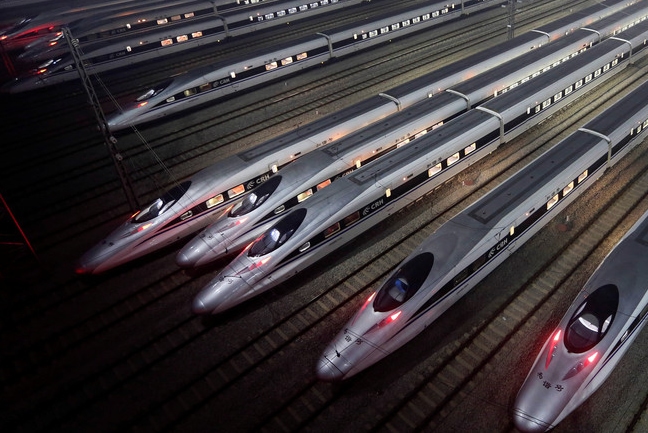China’s Bullet Train Network
The First-ever Underwater High-speed Railway in the World

Source:Reuters
China’s bullet train network is fast expanding, and it will soon extend under the sea. Officials in Beijing have approved construction of a 77km high-speed rail link between Ningbo, a port city south of Shanghai, to Zhoushan, an archipelago off the east coast.
Views
The First-ever Underwater High-speed Railway in the World
By John McKennaweb only
China’s bullet train network is fast expanding, and it will soon extend under the sea. Officials in Beijing have approved construction of a 77km high-speed rail link between Ningbo, a port city south of Shanghai, to Zhoushan, an archipelago off the east coast. It will include a 16.2km subsea tunnel, the nation’s first for high-speed trains.
The new route will connect with China’s existing high-speed network and transport passengers from Hangzhou - capital city of Zhejiang Province - to Zhoushan in 80 minutes. The current journey takes about 4.5 hours by bus or 2.5 hours by car.
Like most high-speed trains in China, those using the Ningbo-Zhoushan rail link will travel at speeds of 250km per hour, marginally slower than the TGV trains that run through France, and Japan’s Shinkansen bullet trains, which travel at 320kmph.
Japanese and French trains run through what are currently the world’s two longest undersea tunnels: the 54km Seikan Tunnel in northern Japan, of which 23km is beneath the sea; and the 50km Channel Tunnel between the United Kingdom and France, 38km of which is under the sea.
Rapid Rail
China’s high-speed rail network is the world’s largest, covering 12,500km, and the government aims to have 38,000km of track in place by 2025.
Projects like the Ningbo-Zhoushan rail link will form part of a major rail-building programme that this year is projected to see 4,000km of new rail lines built, of which 3,500km will be high speed.
China’s investment in high-speed rail, which also includes the development of the world’s fastest trains, is part of its massive infrastructure spending programme.
The programme includes landmark investments such as its $900 billion Belt and Road initiative, developing east-west land and sea trade routes with infrastructure investments in 68 countries.
China is also planning an ambitious project to divert water from the wetter south to its arid north over a distance of 4,350km - similar to the width of the United States.
And in October China’s president Xi Jinping opened the world’s longest sea bridge, a 55km road crossing between Hong Kong and Macau that also included 6.7km of tunnel.
This commitment to infrastructure investment is reflected in China’s ranking in the World Economic Forum’s Global Competitiveness Index 4.0.
While China ranks 28th overall, it is among the best when it comes to much of its infrastructure. It has the second best airport connectivity in the world, the best liner shipping connectivity, and the highest electrification rate of any country for its population (100%).
Its ambitions for high speed rail continue to push the boundaries of what any economy is attempting with its infrastructure: its long-trailed plans for a Bohai Strait tunnel would create the world’s longest undersea tunnel.
At 123km, the Bohai Strait tunnel would be two and a half times the length of the Channel Tunnel, and around eight times the size of the subsea tunnel for the newly approved Ningbo-Zhoushan rail link.
Edited by Tomas Lin
Original content can be found at the website of World Economic Forum: China greenlights first underwater high-speed railway
This article is reproduced under the permission of World Economic Forum (WEF) and terms of Creative Commons Attribution-NonCommercial-NoDerivs 4.0 Unported License (“CCPL”). It presents the opinion or perspective of the original author / organization, which does not represent the standpoint of CommonWealth magazine.







